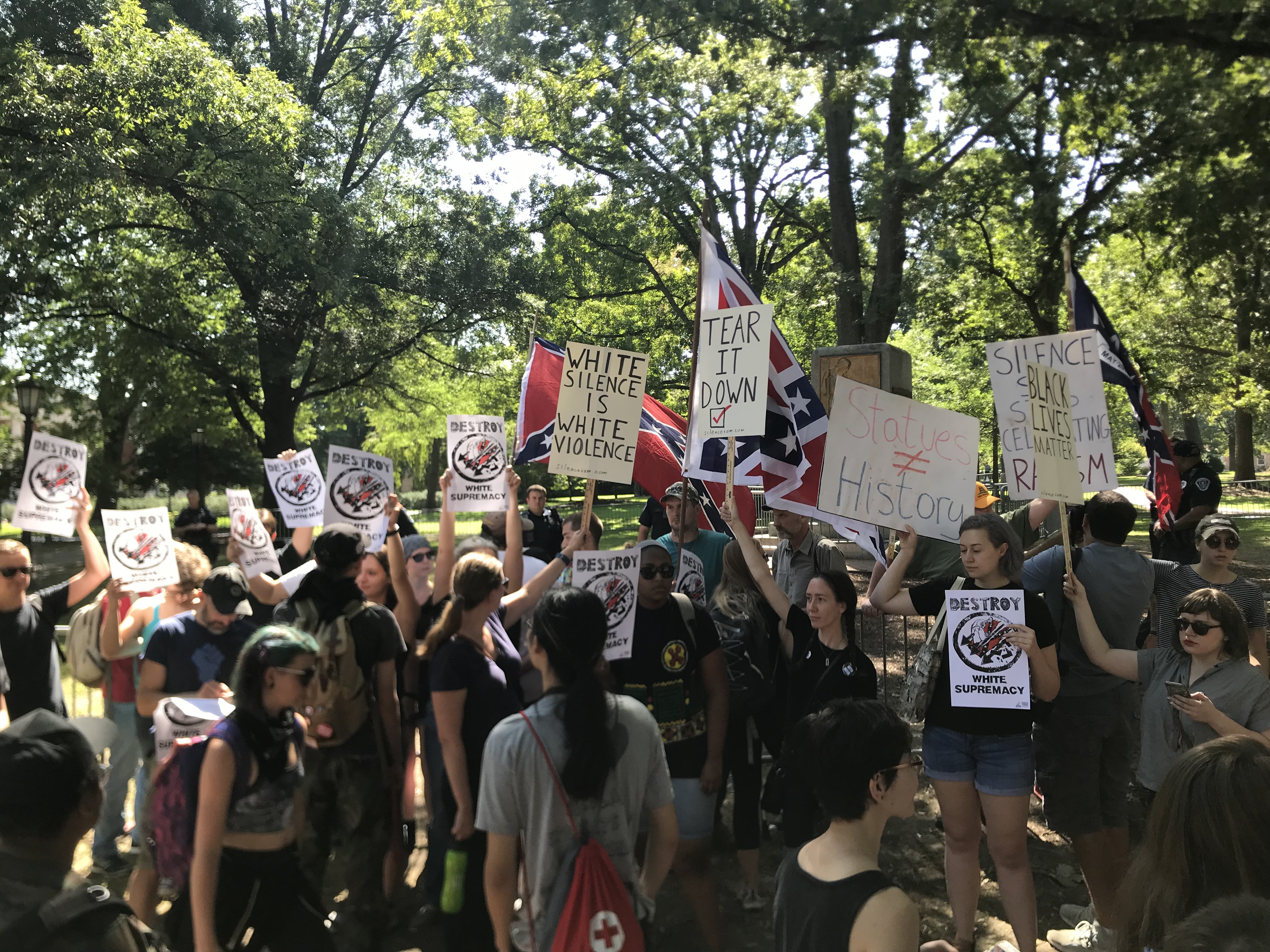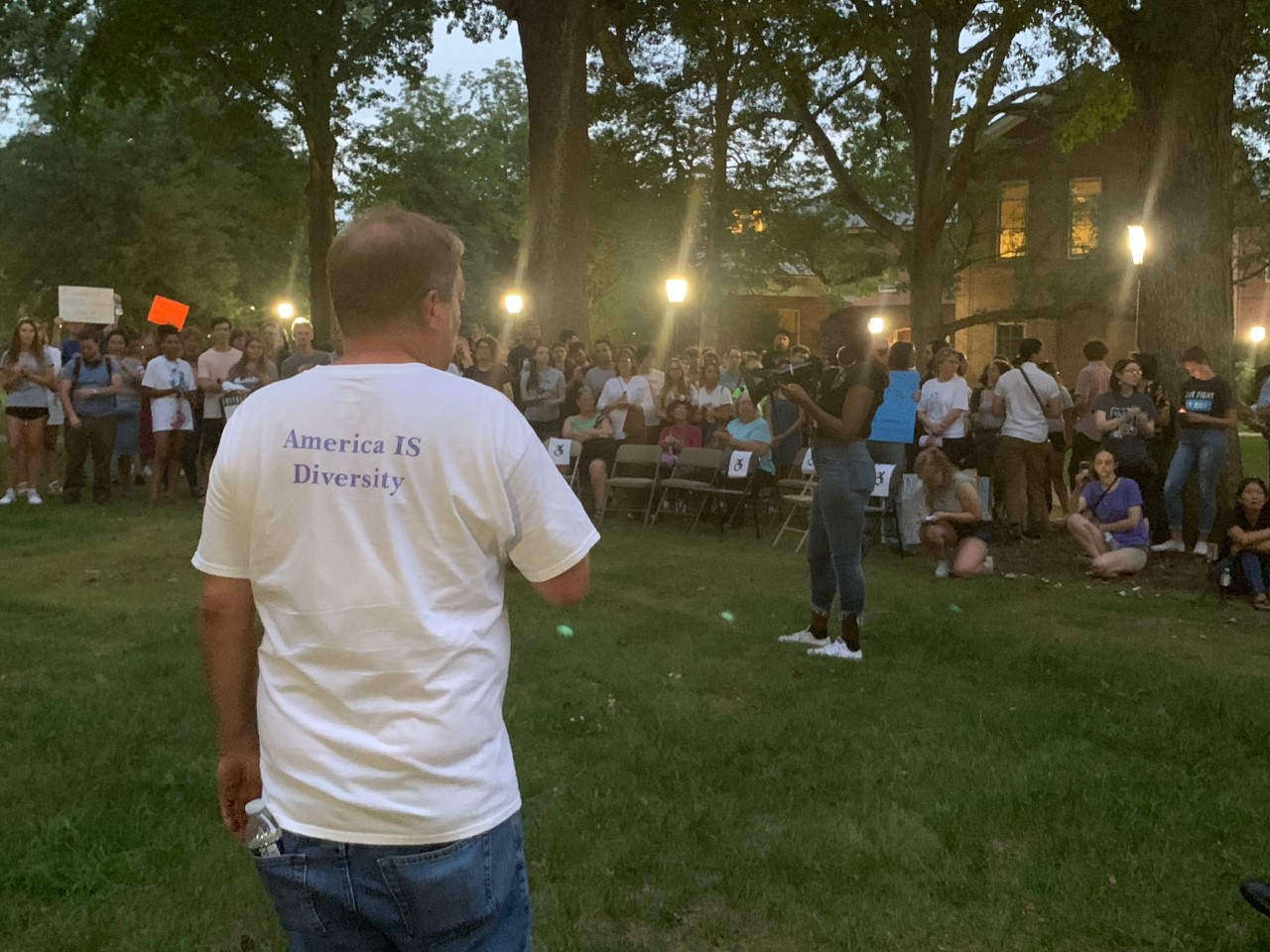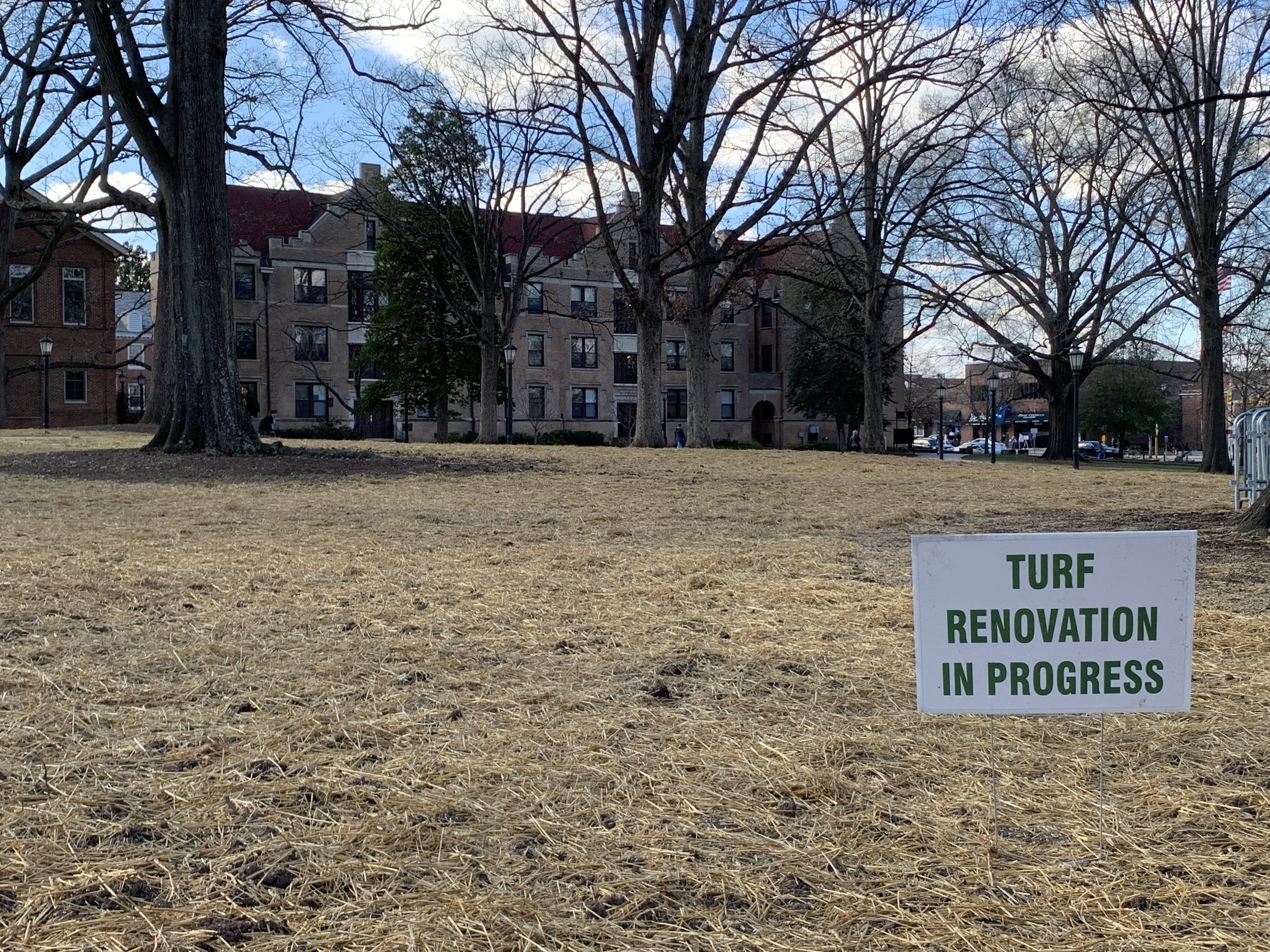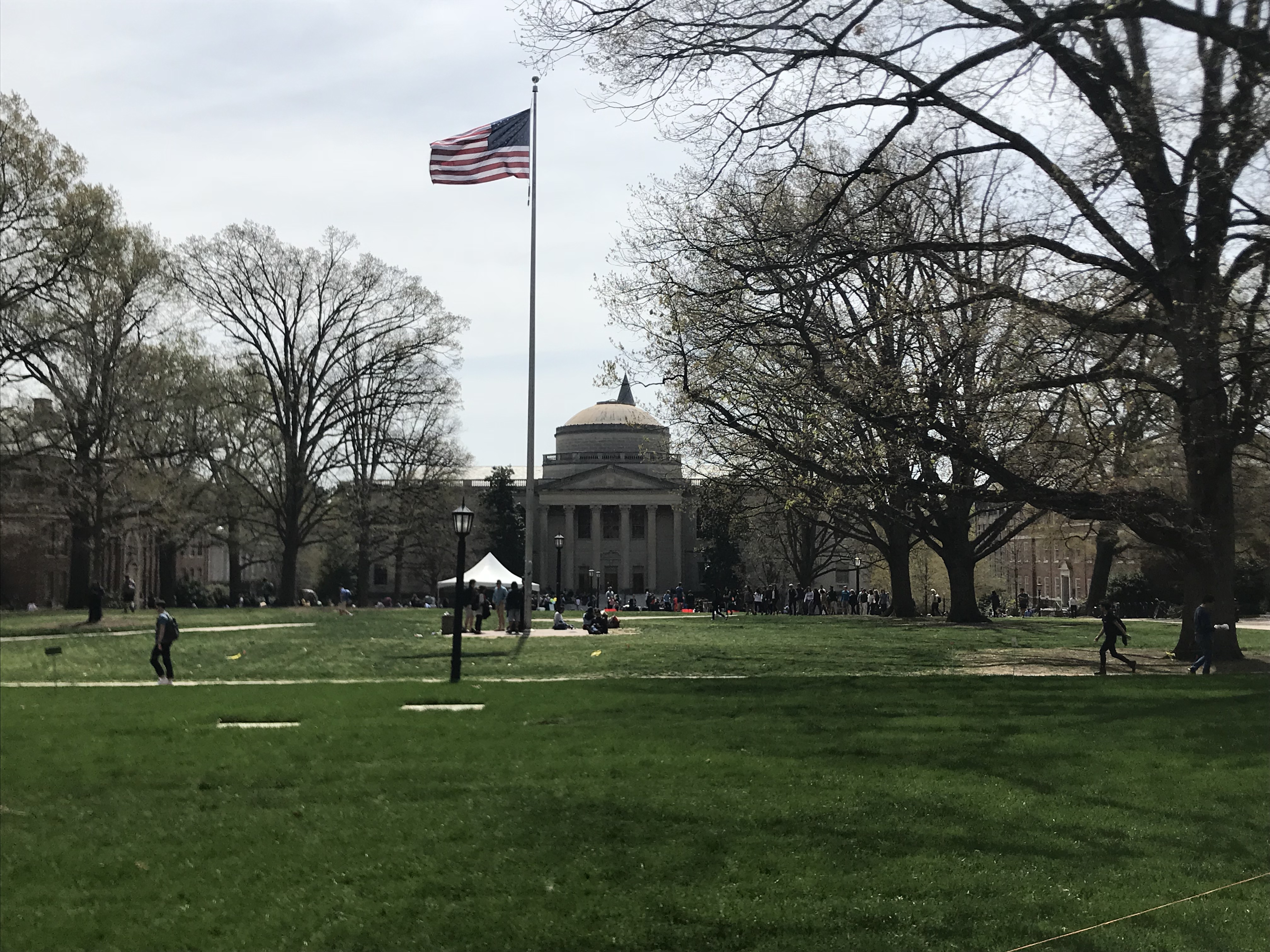Coming off of a public comment session on the Confederate monument at UNC known as Silent Sam, the university Board of Trustees addressed the statue’s future at the board meeting Thursday.
Board chair Haywood Cochrane said the session reiterated some of the board’s values.
“We also heard much passion, much emotion, together with many very personal experiences,” Cochrane said during his opening remarks, “which reinforce our opposition to white supremacy and racism in all forms.”
Chancellor Carol Folt added during her remarks that there is a section of the campus community that views the statue as a racist symbol.
“Many expressed deep pain and fear of what the Confederate monument represents to them,” Folt said. “Based on everything we know, there is no question that the monument was erected during a period when white supremacy, bigotry and racism were a strong message.
“And that was conveyed publicly by those who supported the symbolism of the artifact and spoke at its dedication.”
Folt said that the placement of Silent Sam at such a prominent location on campus is also seen by some as a glorification of the statue.
“They’ve been saying for years that they love the university,” Folt said of some protesters. “But that they feel the presence of Silent Sam – especially in such a prominent, front-door location – is a betrayal of values of inclusivity and welcome that we espouse for our community.
“We must accept this reality if we are truly to confront the issue.”
Cochrane said that this issue is different than the scenario from 2015 where the board voted to rename Saunders Hall to Carolina Hall. The building was previously named for Williams L. Saunders, who was purportedly a leader of the KKK in North Carolina after serving in the Confederacy.
“This current situation is different because of delegated authority issues and current state laws,” Cochrane said. “These are the facts; we live with them.
“But we will not stop considering all legal options available.”
Folt said that the process of renaming Saunders Hall took months of research and work with other stakeholders.
“If we follow the process that we did for Carolina Hall,” Folt said, “the team itself comes up with a whole series of ways to do it. Then they start going out and working with different people in the community – reading it, looking at it, is it getting the message across.”
While the process is ongoing with the chancellor’s History Task Force, Folt said the campus community will see progress soon at McCorkle Place around Silent Sam.
“They’ll start seeing the real products of all that research come forward,” Folt said. “And I think that, by itself, is important. And then as we think about the feedback we get, we have to decide based on that how we’re going to communicate with people about it and what ideas we have that we think we can follow now and what might happen as other things change in the coming months.”
Cochrane reiterated that the university is “not going to break a law,” referencing the 2015 legislation passed by the Republican-led General Assembly preventing the movement of objects of remembrance.
“We hope people understand that, in the urgency of it, that breaking the law is not the answer,” Cochrane said.
There have been calls for the administration to follow direction from Governor Roy Cooper and others to order the statue be removed by deeming it a public safety threat. But Folt said the law isn’t clear in many aspects, including on the authority to issue that directive.
“It’s hard for a public to accept that you can’t do something,” Folt said. “But true confusion in laws just ends up in courts, if you don’t try to clarify the law.”
Folt did say in her remarks during last week’s meeting she would order the statue be moved to a different location on campus if she felt she had the authority to do so.
Cochrane and Folt said that a petition to the State Historical Commission to remove Silent Sam would have to come from the UNC System Board of Governors.
Related Stories
‹
![]()
UNC Education Faculty Join Voices Calling for Removal of Silent SamFaculty from several departments on the UNC – Chapel Hill campus – including at least communication, geography and the School of Law – have been calling for the removal of the Confederate monument known as Silent Sam from UNC’s McCorkle Place. That chorus added voices from the UNC School of Education on Monday afternoon. A […]
![]()
UNC Holding Public Comment Session on Silent Sam WednesdayA public comment session on the Confederate monument at UNC known as Silent Sam will be held on Wednesday as part of the university’s Board of Trustees meeting. Board chair Haywood Cochrane said during his remarks at the September board meeting that the board would hold a public comment session amid the ongoing protests of […]

Chapel Hill to UNC: Relocate Silent Sam Away from the TownChapel Hill Mayor Pam Hemminger and members of the Town Council sent a letter to UNC following the voided lawsuit between the university and a pro-Confederate group. Last week, Judge Allen Baddour ruled that the Sons of Confederate Veterans lacked evidence to prove the group had legal standing to bring action against the UNC System and dismissed […]

Groups Celebrate Anniversary of Silent Sam Toppling at UNCSinging and chanting started a rally Tuesday night celebrating the one-year anniversary of the Confederate monument on the UNC campus known as Silent Sam being toppled by protesters. A coalition of groups organized Tuesday’s event, including a land acknowledgment from a member of the Carolina Indian Circle and remarks from Barbara Sostaita with UndocuCarolina – […]

Silent Sam Decision Clouding Start of UNC Academic YearProtesters pulled the Confederate monument known as Silent Sam down from its pedestal on McCorkle Place on the UNC campus one year ago. But the monument’s future – whether on or off campus – is still undecided. That event on August 20, 2018, was the culmination of protests calling for the university administration to remove […]

Silent Sam Decision Looms Over UNC, Search for Police ChiefJeff McCracken’s retirement as UNC Police chief, which was announced earlier this year, is effective Monday, and the university has named Thomas Younce as his interim replacement. UNC – Chapel Hill Board of Trustees chair Haywood Cochrane said after a special meeting of the board last Thursday that the national search for a permanent police […]

After Tumultuous Academic Year, UNC Board Still Divided on Silent SamWhile the Confederate monument known as Silent Sam wasn’t officially on the agenda for Wednesday’s meeting of the UNC System Board of Governors, it was still on the minds of many at the meeting. The initial mid-March deadline for a new plan for the statue that stood on the UNC – Chapel Hill campus for […]

UNC Governors Will Not Discuss Silent Sam at May MeetingContinuing a series of delays, the UNC System Board of Governors will not discuss the future of the Confederate monument on the UNC – Chapel Hill campus known as Silent Sam at the board’s May meeting. Board chair Harry Smith made the announcement Tuesday afternoon. “In early March, we set the May meeting of the […]

UNC, Chapel Hill Planning for Possible Demonstrations SaturdayOfficials from UNC and the Town of Chapel Hill are preparing for the potential for demonstrations in downtown where the campus and town meet on Saturday. The UNC administration sent a message to the campus community on Friday that said the university “is preparing for the possibility of opposing demonstrations on and near campus.” The […]

UNC Chair Says Faculty had Good Meeting Discussing Silent Sam with Board of GovernorsLeslie Parise announced late last month that she would be stepping down from her role as faculty chair. She joked during her address to the Board of Trustees University Affairs committee on Wednesday that leaving two years into the three-year appointment was fitting with recent university turnover. “Because, as you know, interim is kind of […]
›






